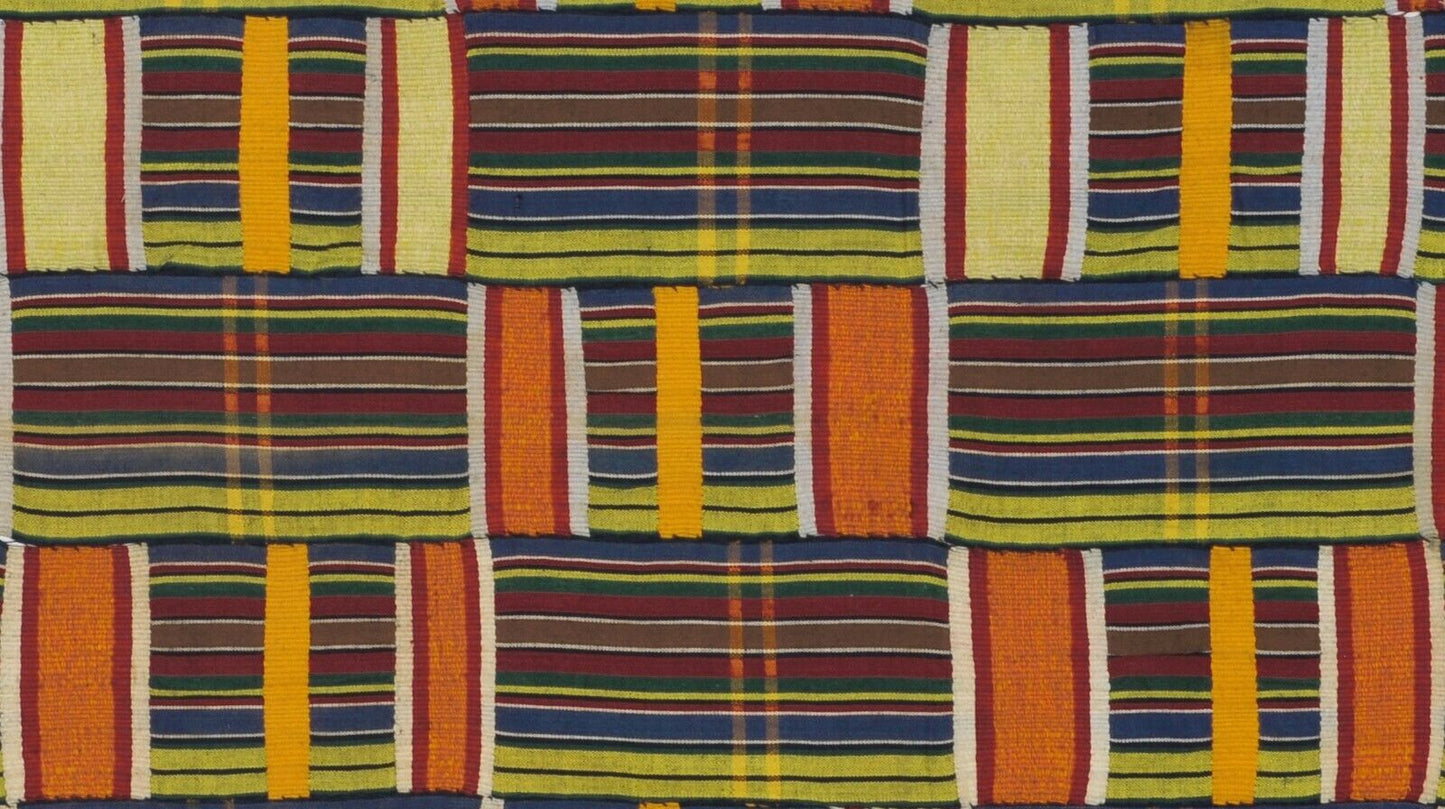Tribalgh
Vintage 1960s Handwoven Ewe Kente Cloth – Woman Size (170 × 124 cm)
Vintage 1960s Handwoven Ewe Kente Cloth – Woman Size (170 × 124 cm)
Item number:
SKU:SD-31205
Check shipping cost
Check shipping cost
FREE DHL shipping ( 2 - 4 working days ) to all over the world.
We combine shipping on multiple purchases!
Couldn't load pickup availability
Vintage 1960s Handwoven EWE KENTE Cloth – Woman Size (170 cm × 124 cm)
Authentic ceremonial Kente cloth handwoven in the Volta region of Ghana. Beautifully fashioned in square weft‑float blocks of rich, vibrant colors, this vintage 1960s piece represents true craftsmanship and cultural heritage. It is a “Woman size” cloth, perfect for dressing, display or creative decor.
- 🌸 Size: 66 ¾″ × 49″ (170 cm × 124 cm)
- 📅 Era: 1960s vintage
- 🎨 Condition: Very good, with minimal signs of age (small stains and light wear consistent with authentic vintage use)
This cloth features sewing of narrow hand-loomed strips into a larger whole a testament to the skill and patience of Ewe weavers. Finished with finely detailed square motifs in a radiant palette, it captures both tradition and timeless artistry. Whether worn ceremonially, draped as wall art, or styled as a home statement piece, it’s a beautiful embodiment of Ghanaian history and identity.
About Ewe Kente Cloth
Ewe Kente cloths, historically woven on horizontal treadle looms in Ghana’s Volta region, are rich in narrative symbolism. Weavers spend weeks–or even months crafting strips that are later stitched into larger pieces. Each pattern block often includes symbolic colors and motifs representing oral traditions, morality, social roles, and spiritual beliefs. Animals, geometric shapes, and mythic icons express proverbs and ancestral heritage. Materials range from fine cotton to occasional silk threads, depending on ceremonial purpose.
Traditionally worn during important rites marriages, festivals, funerals Ewe Kente holds deep cultural resonance. It differs from Ashanti Kente in structure and aesthetics: Ewe designs often favor looser, more graphic geometric patterns and a distinctive palette, where Ashanti Kente typically features tighter weaving and more elaborate, multicolored combed cotton bands.
The art of Kente weaving when traced back to the 17th century remains central to Ghana’s cultural identity. Initially exclusive to royals, it has transcended class boundaries, now cherished by collectors around the world. Today, such vintage Ewe Kente cloths are appreciated not only for ceremonial use but also as woven art draped as wall hangings, sofa/bed coverings, or framed textile art.
A genuine masterpiece this cloth combines functionality and aesthetics, offering a rare window into the legacy of Ghanaian textile art.
🔗 Explore more from our Heritage line:
Share






